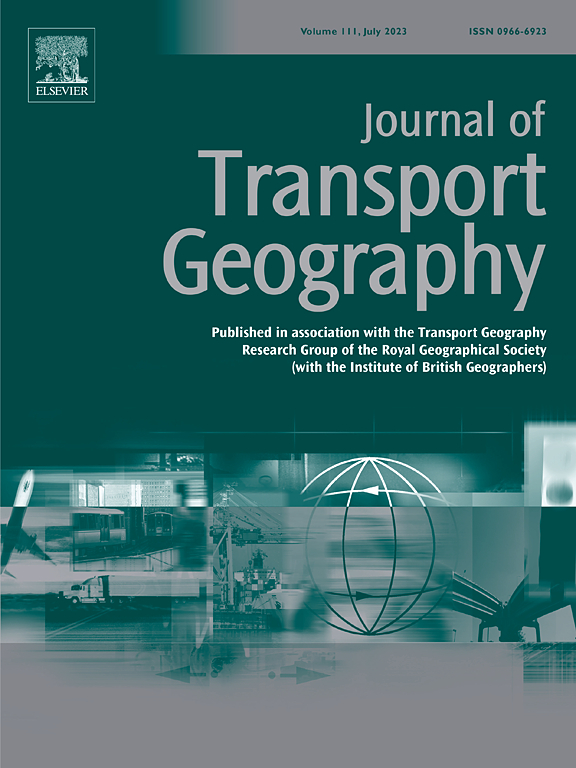Cycling cities: Measuring urban mobility mixing in bikeshare networks
IF 6.3
2区 工程技术
Q1 ECONOMICS
引用次数: 0
Abstract
To promote low-carbon transit, cities are increasingly adopting public-private partnerships to offer bikeshare services. But some neighborhoods use bikeshare services more than others, raising questions about how equitable these public programs' rollout has been. We examined the entire temporal directed network of individual rides from Boston's Bluebikes program, tracking bikers' starting and ending stations from 2011 to 2021. We hypothesized that ridership levels are lower between neighborhoods of color than white neighborhoods, and greater between wealthier neighborhoods than working class neighborhoods. We designed edgewise block permutation tests to measure the statistical significance of mobility between similar neighborhoods, while controlling through permutation blocks for population density, program geography, distance, and the distribution of race, wealth, education, and age. The network is deeply stratified by race and income, with more homophilous movement between neighborhoods from similar income brackets than expected due to chance. Race is linked to considerable homophily, but with low statistical significance. However, homophilous mobility by income and race has dropped sharply from 2011 to 2021, suggesting that Bluebikes is gradually reaching a broader range of neighborhoods. This presents signs of hope for a transition to equitable transit options in other major US cities as well.
自行车城市:衡量共享单车网络中的城市交通混合
为了促进低碳交通,城市越来越多地采用公私合作的方式提供自行车共享服务。但一些社区比其他社区更频繁地使用共享单车服务,这引发了人们对这些公共项目推出的公平性的质疑。我们研究了波士顿蓝单车项目中个人骑行的整个时间定向网络,追踪了骑车者从2011年到2021年的起止站。我们假设有色人种社区之间的客流量低于白人社区,而富裕社区之间的客流量高于工人阶级社区。我们设计了边缘街区排列测试,以衡量相似社区之间流动性的统计意义,同时通过排列街区控制人口密度、项目地理、距离以及种族、财富、教育和年龄的分布。这个网络被种族和收入深深地分层,由于偶然的原因,来自相似收入阶层的社区之间的同族运动比预期的要多。种族与相当大的同质性有关,但统计意义不高。然而,从2011年到2021年,按收入和种族划分的同一性出行急剧下降,这表明蓝单车正逐渐进入更广泛的社区。这也为美国其他主要城市向公平的交通选择过渡提供了希望。
本文章由计算机程序翻译,如有差异,请以英文原文为准。
求助全文
约1分钟内获得全文
求助全文
来源期刊

Journal of Transport Geography
Multiple-
CiteScore
11.50
自引率
11.50%
发文量
197
期刊介绍:
A major resurgence has occurred in transport geography in the wake of political and policy changes, huge transport infrastructure projects and responses to urban traffic congestion. The Journal of Transport Geography provides a central focus for developments in this rapidly expanding sub-discipline.
 求助内容:
求助内容: 应助结果提醒方式:
应助结果提醒方式:


